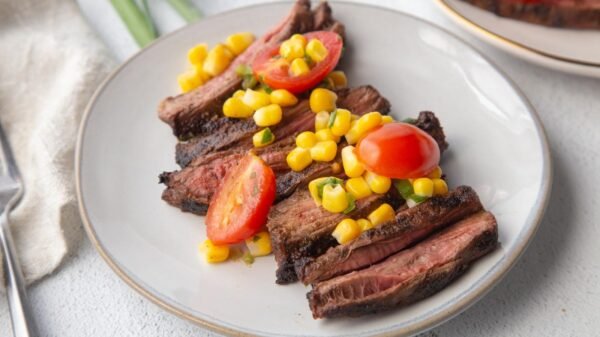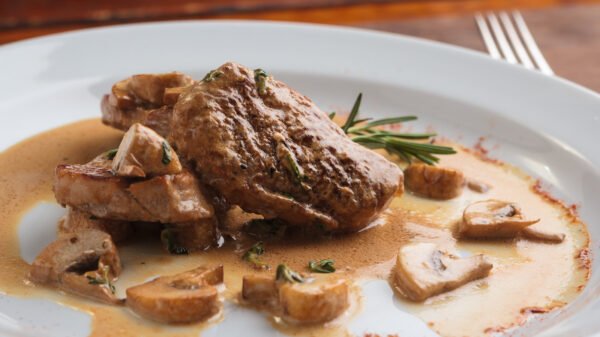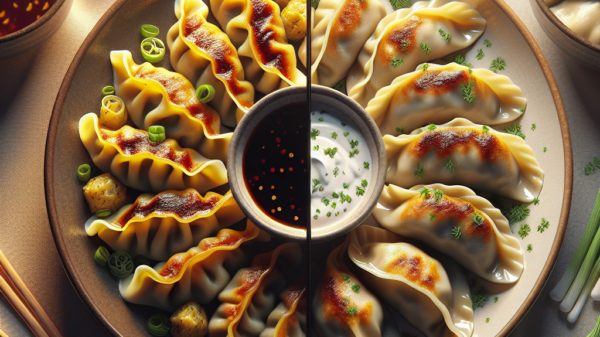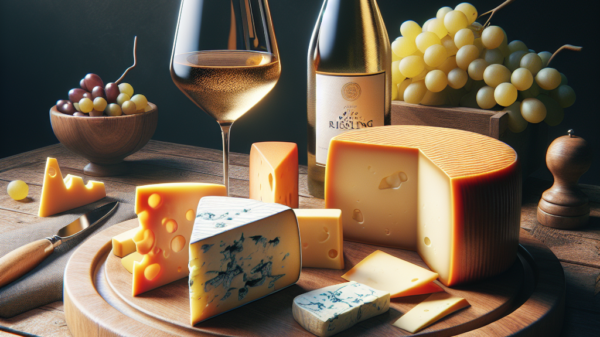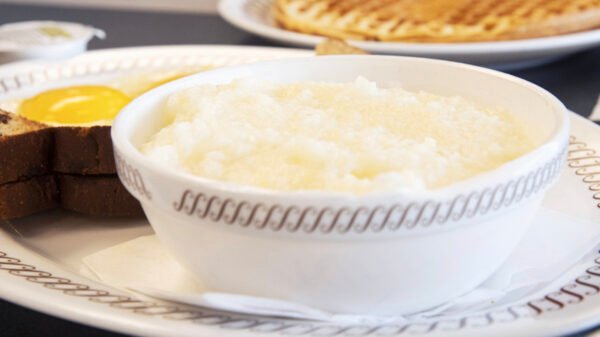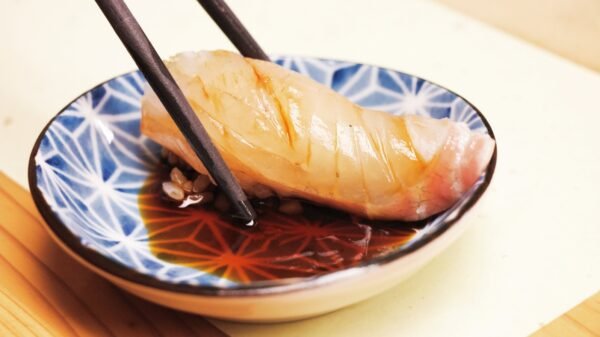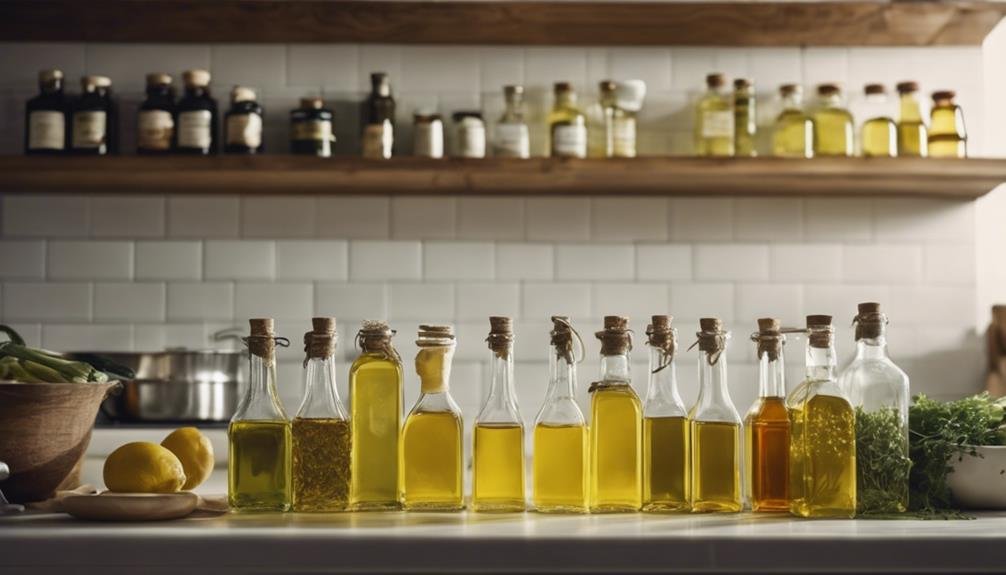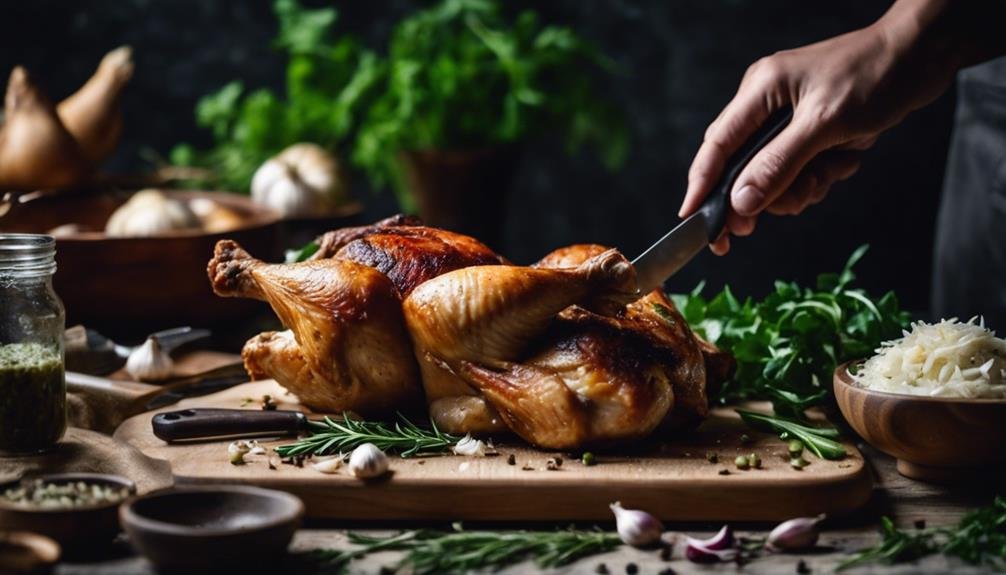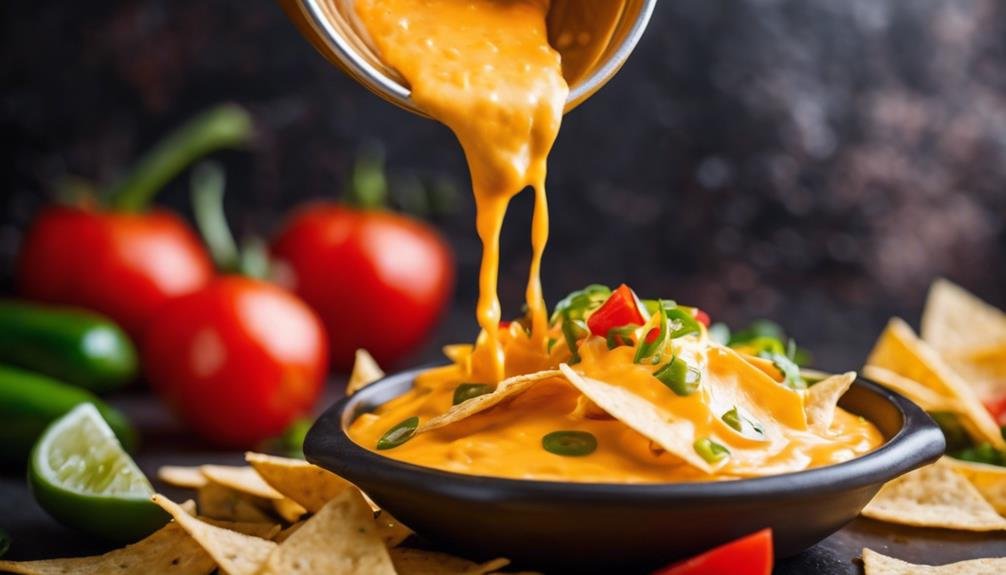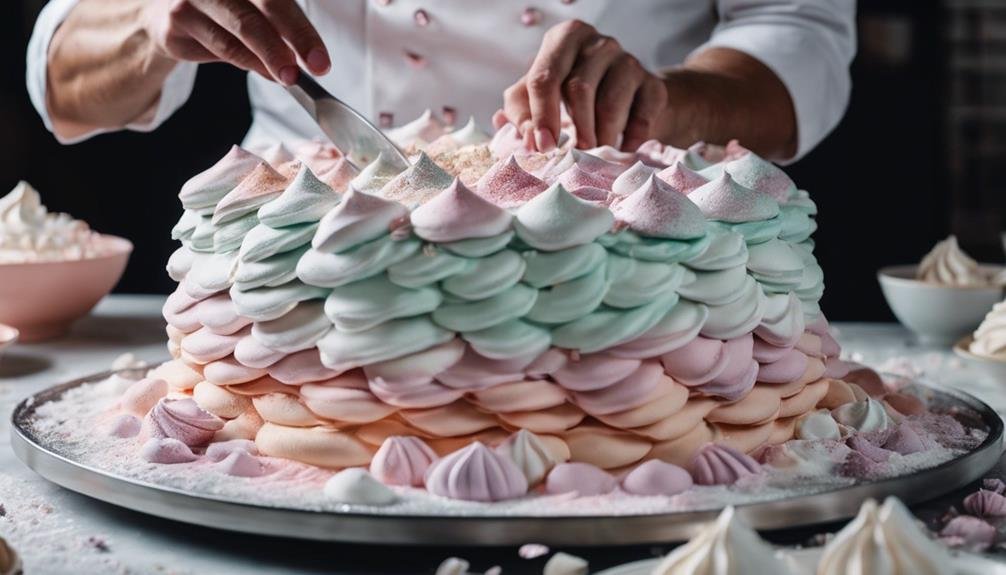You might not know this, but the world of neutral oils is as nuanced as a fine wine.
You’re probably reaching for that olive oil out of habit, but did you know that the right neutral oil can enhance your dish without overpowering it?
From grapeseed oil’s high smoke points, which make it a champion for frying, to the subtle ways sunflower oil can enhance a dressing without stealing the show, there’s a lot to unpack.
Let’s begin on a culinary journey together, exploring how these understated heroes can transform your cooking from good to gourmet.
Who knew fats could be this fascinating?
Neutral Oils Key Takeaways
- Select oils based on their smoke points to match cooking techniques, enhancing dish flavors and textures.
- Neutral oils like canola are versatile and suitable for various cooking methods, from sautéing to deep-frying.
- Incorporating oils rich in unsaturated fats and vitamin E, such as avocado and grapeseed, contributes to a healthier diet.
- Store oils in cool, dark places and check for freshness to preserve their quality and extend shelf life.
Understanding Smoke Points
At the heart of culinary success, understanding smoke points—the temperature where oils wave a white flag and start smoking—is key to elevating your dishes from good to gourmet. You see, not all oils are created equal regarding how hot they can get before they break down and turn your kitchen into a smokehouse. This isn’t just about clearing the air; it’s about unleashing the full potential of your cooking techniques without inviting a burnt taste or harmful compounds to the party.
Oils with higher smoke points, like the robust avocado oil reaching up to 520°F, are your go-to for the high-heat dance of deep-frying or searing. They’re like the culinary equivalent of firewalkers, unscathed by the flames. Conversely, lower smoke point oils, such as the delicate extra virgin olive oil (whispering sweet nothings at 325°F), prefer a gentler approach—think light sautéing or a drizzle over your finished masterpiece.
Selecting the Right Oil
When cranking up the heat in your kitchen, choosing the right oil isn’t just smart; it’s essential for avoiding culinary catastrophes and ensuring your dishes dazzle rather than fizzle. With an array of oils on the market, the key lies in understanding their smoke points and flavor profiles. After all, you’re not just cooking but curating an experience.
Consider smoke points your guiding star in this oily galaxy. High-smoke point oils are your best allies for high-heat cooking, like searing that perfect steak or crisping veggies to golden perfection. With its 400°F smoke point, Canola oil is a versatile champion, perfectly suited for various techniques without overpowering your food’s natural flavors.
But don’t stop there! Venture further with grapeseed oil’s 420°F smoke point, making it a maestro for sautéing and stir-frying. Sunflower oil shines at 450°F, ideal for deep-frying and roasting without a hitch. And for those culinary adventures that demand the utmost heat, rice bran oil, at a scorching 490°F, ensures your high temperature is fearless and flawless.
In the quest for the perfect dish, selecting the right oil with a high smoke point and neutral flavor isn’t just a choice; it’s an art.
Cooking Techniques Explained
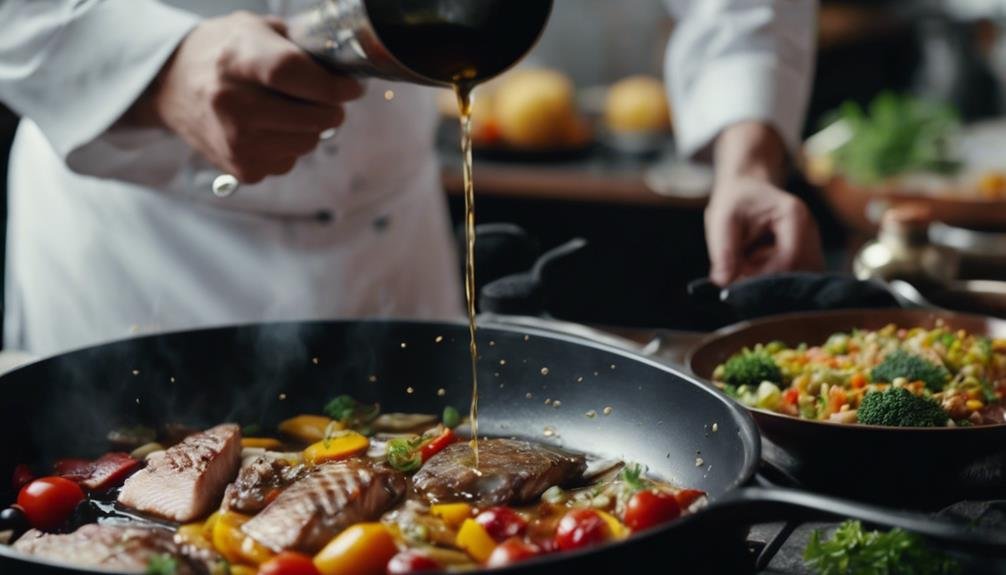
Having explored the important role of choosing the right oil, let’s focus on how to wield these neutral oils to master various cooking techniques. With its charm, each method brings out the best in your culinary creations, making your dishes not just meals but experiences.
Here’s your cheat sheet to shine in the kitchen:
- Sautéing: Swift and sassy, this method involves cooking your ingredients quickly over high heat in a shallow pan. Grab your canola or grapeseed oil and get those veggies dancing!
- Stir-frying: This high-speed technique uses a wok and high heat to cook ingredients rapidly. Sunflower or safflower oil is your best pal here, ensuring your stir-fry is both speedy and delicious.
- Deep-frying: For that irresistible crunch, submerge your food in hot rice bran oil. It’s the secret to a crispy exterior while keeping the inside moist and tender.
- Roasting: Coating your veggies or meat in canola or sunflower oil and baking them results in an evenly browned masterpiece that’s hard to resist.
- Salad Dressings: Drizzle some grapeseed or sunflower oil over your greens. These neutral oils are the unsung heroes, enhancing flavors without stealing the spotlight.
Master these techniques with neutral oils, heading to culinary greatness.
Health Benefits and Considerations
Often overlooked, neutral oils like canola, grapeseed, and sunflower elevate your culinary game and pack a powerful punch of health benefits. These humble heroes are your kitchen’s best-kept secret, lowering cholesterol and dialing down inflammation with their rich unsaturated fat profile. Plus, they’re bursting with vitamin E, boosting heart health and ensuring your body absorbs all those yummy nutrients efficiently.
But here’s where it gets spicy: with high smoke points, these oils are the unsung champions of various cooking escapades. Whether you’re searing, frying, or gently sautéing, they’ve got your back, ensuring your dishes are delicious without an overpowering taste.
And let’s not forget our friends Avocado Oils and Coconut Oil, who bring their own set of perks, making your culinary repertoire as healthy as it’s diverse.
Storing and Preserving Oils

After exploring the myriad health benefits and versatile cooking applications of neutral oils, let’s know how to keep these culinary treasures at their best by mastering the art of storage and preservation.
Because these oils boast higher smoke points, they’re a kitchen staple for chefs who aim to serve perfection. But even the best can go bad without proper care. Here’s how you can store your neutral oils and make sure they’re always ready to perform under the heat:
- Keep in a cool, dark place: This prevents oxidation and keeps your oils fresh.
- Seal containers tightly: Avoid the enemies of freshness – heat, light, and air. They’re the trio leading to rancidity.
- Sniff before you pour: Rancidity isn’t shy. If your oil smells off, it’s time to say goodbye.
- Refrigerate for longevity, especially for nut oils like walnuts. It’s like cryogenics for your oils, slowing down the aging process.
- Remember, proper storage equals quality: Preserving the flavor and quality of neutral oils ensures that high smoke points aren’t just a number but a promise of top-notch cooking results.
Frequently Asked Questions
What Oil Do Professional Chefs Use?
Professional chefs often use canola, grapeseed, and safflower oils due to their versatility and high smoke points. These oils allow the natural flavors of the food to stand out without being overpowered by the taste of the oil itself, making them a preferred choice for creating culinary magic in professional kitchens.
What Is the Best Neutral Oil for Cooking?
Canola or grapeseed oil is the best neutral oil for cooking, considering its versatility and high heat tolerance. These oils excel at not overpowering your dishes with their flavor and can withstand the demands of various cooking methods.
Is Avocado Oil Considered a Neutral Oil?
Avocado oil is indeed considered neutral. It boasts a mild taste, can withstand high temperatures, and enhances meals with its health benefits, making it an excellent choice for everything from frying to drizzling.
Is Extra Virgin Olive Oil a Neutral Oil?
Extra virgin olive oil is not considered neutral due to its strong flavor and low smoke point. It is best used for dressings and drizzles rather than high-heat cooking.
Conclusion
So, you’ve now dived deep into the world of neutral oils, understanding their smoke points and selecting the perfect one for your culinary adventures. You’ve mastered techniques from sautéing to deep-frying, all while keeping an eye on health benefits.
Remember, storing your oils correctly is key to preserving their essence. So, go ahead, chef, make those dishes pop with the right neutral oil. It’s not just cooking—crafting art, one drizzle at a time.
Keep sizzling, and stay splendid in the kitchen!


